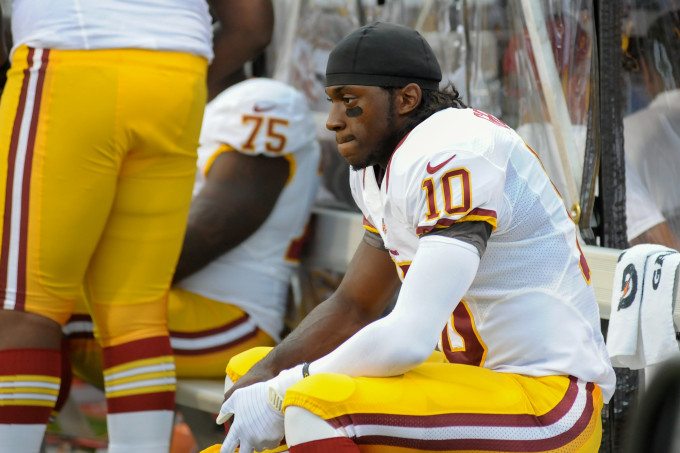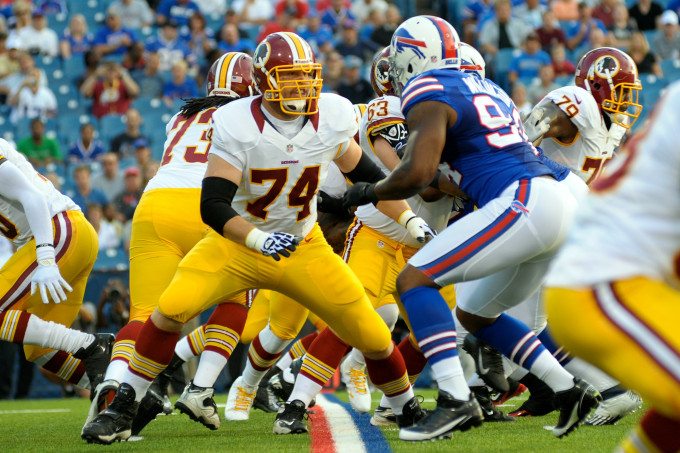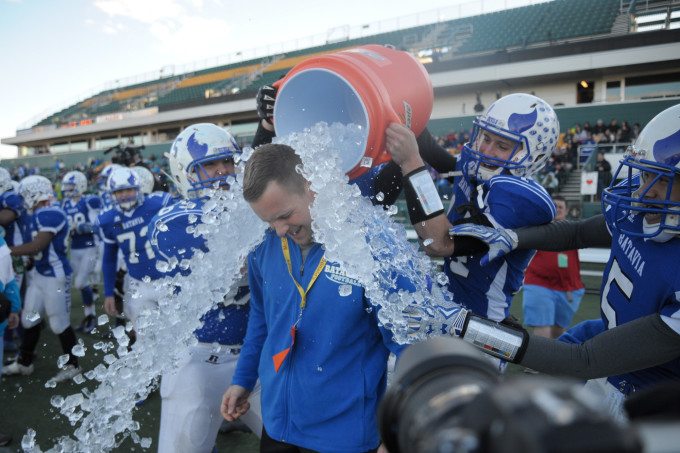
All images by Michael Johnson. Used with permission.
Photographer Michael Johnson has been a freelance sports shooter since 1994, and he didn’t know that he wanted to make it his career until college. “While at SUNY Brockport I took over the photo editor position at the school paper, The Stylus, which is when I finally choose to make a career out of my passion for photography. When I graduated in 2000 I came home knowing I what I wanted to do but not fully how to accomplish it.” says Mike about a dilemma that every photographer faces. “I went back to freelancing and in 2002 I was hired full time by the Livingston County News out of Geneseo, NY.”
Over the years, Mike has photographed loads of sports: football, basketball, baseball, etc. with the help of supportive parents. When he started, he would shoot sports with a Pentax K1000. He’s come a long way from when he first started shooting at the age of 5 with a plastic camera modelled after the Smurfs.
Phoblographer: Talk to us about how you got into photography.
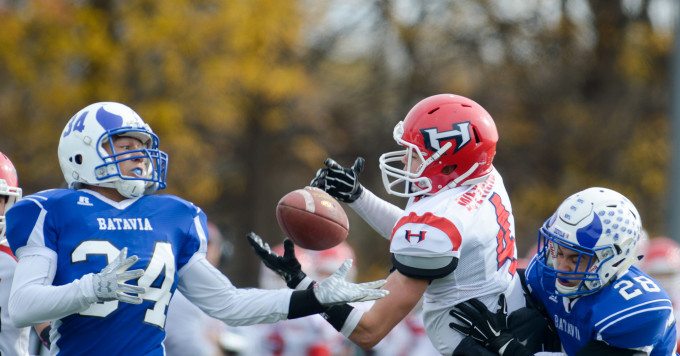
Mike: I started taking pictures when I was 5. My Grandmother and mother both were shutterbugs. I still have my first camera which is a plastic camera with smurfs on it that takes 120 film. From there I had been off and on with taking pictures until high school when I took classes in black and white photography.
Phoblographer: What got you into sports photography?
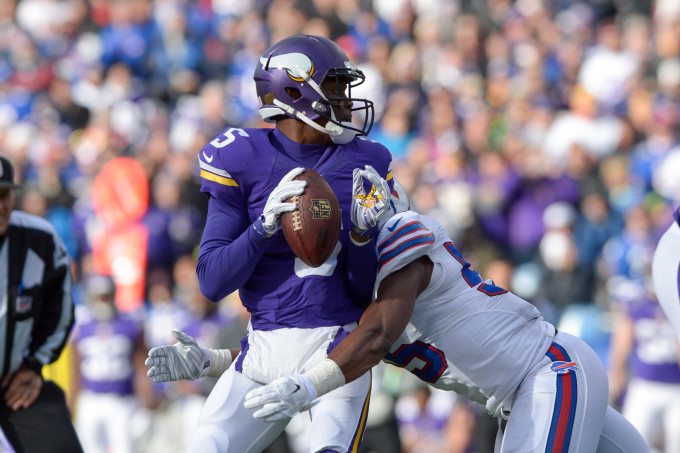
Mike: I was always into sports having played team sports since I was younger and having parents that took me to games and watched sports. As I started to get serious about photography in high school my photography teacher, Mr. Forsythe, had a segment on action photography. I went to visit a local college that I was interested in playing football for and took a camera with me figuring I could do an assignment for class. After processing the film and making enlargements for the project Mr. Forsythe pulled me aside where he suggested I talk with the local newspaper. That started me on my path.
Phoblographer: When you first started shooting football, what were some of the biggest challenges that you encountered and how did you learn to get over them?
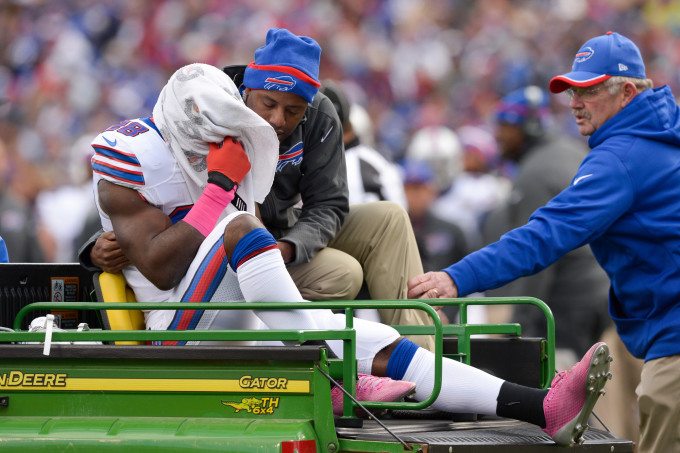
Mike: Back then in 1995 there was no digital photography. There where no insane ISOs like today and to go to an event I had to understand how many shots I could take. The papers I freelanced for would give me a roll or two of typically 36 exposures each. So I couldn’t waste a shot. I also didn’t have the money for expensive equipment so I had to work with lesser gear. I used a Pentax K1000 with manual lenses. The longest glass I had was a zoom that went to 200 mm. I would have to push the film and also use a flash all the while trying not to take to bad photo’s as I only had a set number before I was out.
Phobographer: Sports photography is an interesting blend of both capturing a candid moment and having the clarity of mind to envision what will happen next. So as you’re shooting, are you constantly also thinking about the next moments and how you’re going to frame them? How do you learn to process all this and pay attention to key moments?
Mike: I find that my mind is on the game. I get into the moment. I’m looking for certain plays and going with my gut feeling as to what I think is going to happen. At the same time I’m looking up and down the sideline to see if something interesting is going on. Everything slows down for me. I’ve heard athletes talk about being in the zone and having everything slow down. I know that feeling and it always amazes me after the game that all that happens in a short period of time.
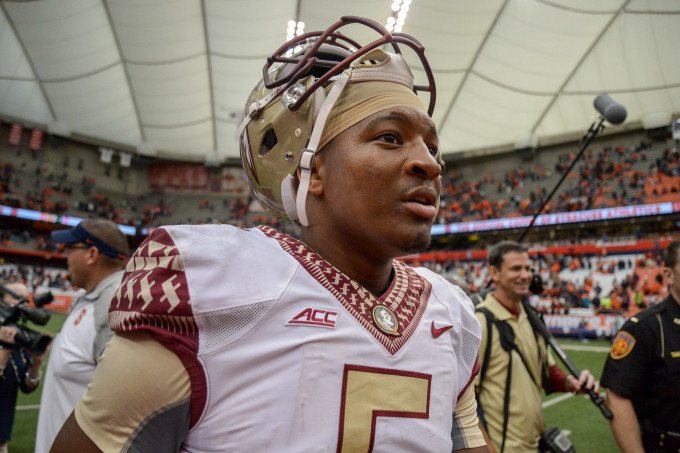
Phoblographer: What do you feel are the photos that editors really want to see the most from football games?
Mike: This is an interesting question. The obvious answer is the big play. Though it’s not just the big play but it’s shooting it in a way that’s different from the others on the sideline. Another thing is capturing the emotion of the game. I look for the eyes of the player. The eyes tell the story. So when I send in photos to a sports editor or the picture desk I look to send that “wow” action shot along with any celebration/dejection that may breakout during the game. Depending on the type of game I may have to compete against one other photographer or 50 for an image so I’m looking to capture that moment in a different way than the next guy.
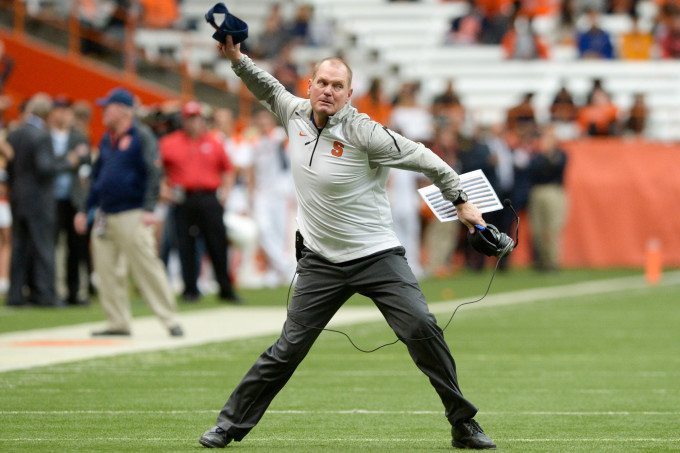
Phoblographer: When you’re shooting and going through your images, what’s going through your mind during the cull process considering some publications may only run one photo but you’ve probably shot well over 1,000?
Mike: First I will tag photo’s during a game either directly after a big play or when I have a break in the action. Since I have a transmitter on my main camera I do live photo updates mainly on Twitter from games so I’m always “chimping” during the game (I just had a high school sectional play-off game with a final score of 70-60. I was tweeting out photo’s following every touchdown. My phone’s battery was dead by the end of the game). So I have a base to work with when I hit the photo room when I’m covering an NFL or NCAA team. Keep in mind I typically do this at the half and end of the game. I do a quick crop, edit and caption before uploading. If it’s a game I’m uploading to Zuma Press I will go back after the first take is gone and double check to make sure I haven’t missed anything. Depending on the game I average around 900 images a half for NFL and NCAA while high school games typically are 600-700 images a game.
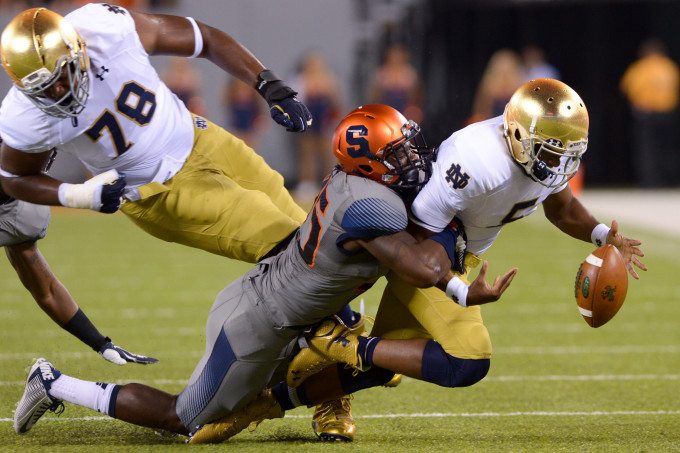
Phoblographer: Talk to us about the gear you use and why you choose it?
Mike: I shoot with Nikon equipment. I currently have a D4 with a wireless transmitter, a D3, D700, D7100 and a V1 (though it’s normally a camera I use for fun). I currently have a Nikkor 300mm f2.8 that I pair with Nikon teleconverters. I also have an Nikon 80-200mm f2.8, a 70-200mm f2.8 VRI, a couple of nikon wide lenses and a sigma 14mm fish-eye that has been one of my favorite lenses to shoot with. I also have several Nikon flashes. I chose Nikon back in the film days. I ordered a Nikon N90s with a battery grip from B&H in 1997 for I think $1200. I bought my first digital, a Nikon D1h in early 2002 (about $5000). I stayed with Nikon since though before the D3 I had considered switching. At the time I chose Nikon it was because of the feel of the camera. The N90s was a solid camera body that just felt right in my hands. It was also hard to change because I paid and still pay for all of my equipment. My parents have helped me out with some things but I make sure I’ve paid them back every time. My like is tied up in camera gear.
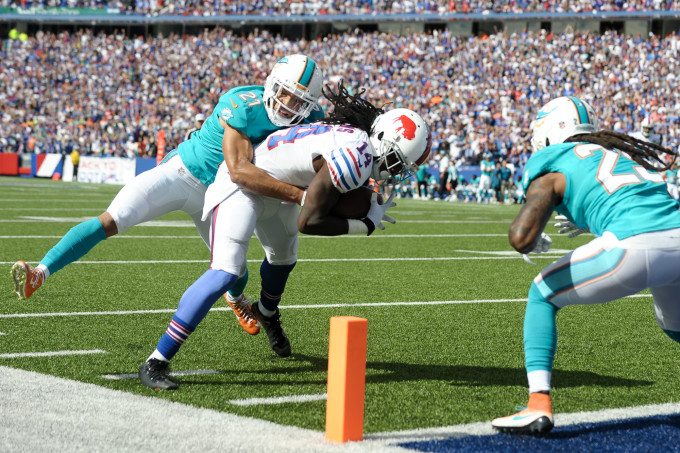
Phoblographer: What do you believe are some of the biggest challenges of photographing football?
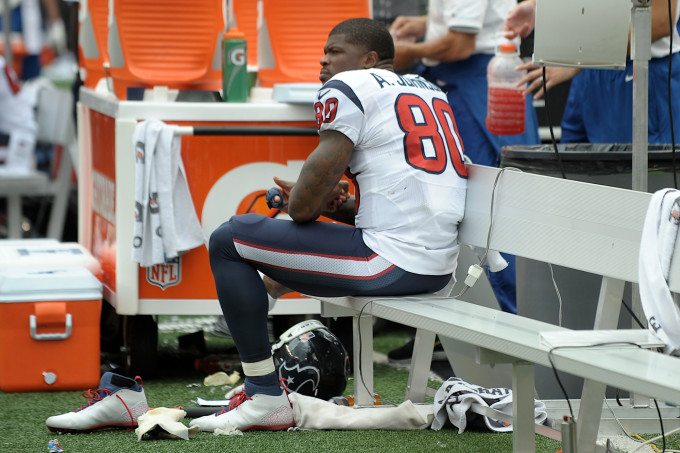
Mike: Photographing football can be tough depending on the types of teams you are covering. I have several high school teams that run a misdirection type offenses that can be just bodies everywhere blocking the action. I also find that just like the players have a training camp and practices to get set for the season that after shooting a summer full of baseball and concerts that it takes some time to readjust to shooting football.
Phoblographer: What the story behind your favorite football shot that you’ve produced?
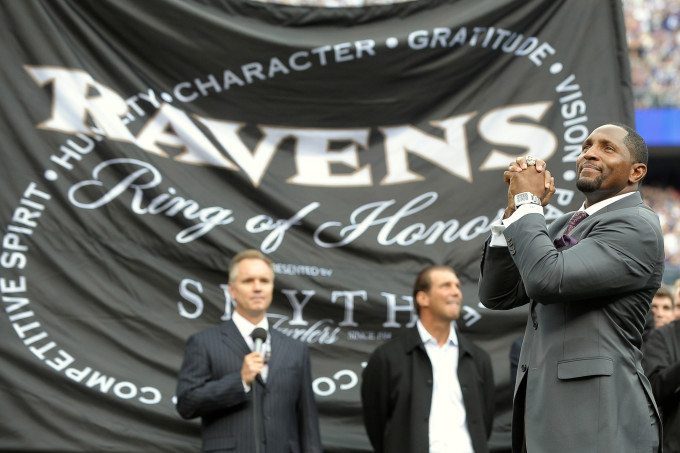
Mike: My favorite football shot I’ve produced was one of luck. It’s a photograph on an unknown NFL lineman, Tyler Polumbus who was then playing for the Washington Redskins. I was covering the Redskins preseason game against the Buffalo Bills at Ralph Wilson Stadium.
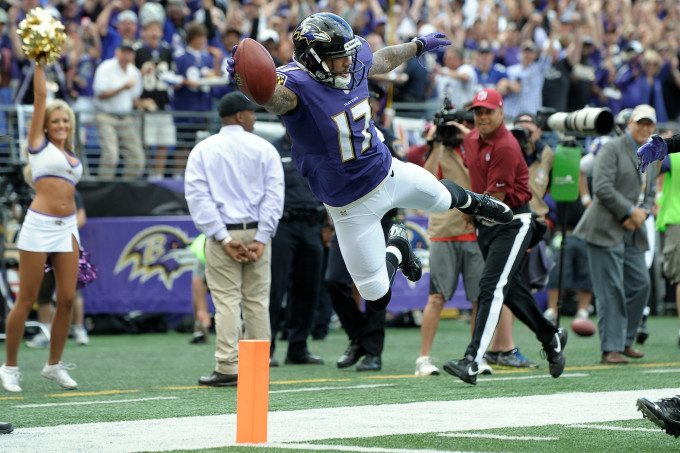
Being preseason I knew that the starters, who where the main focus, where only going to play about a quarter or so. I was concentrating on then rookie quarterback Robert Griffin III that day. I had set up in a spot where I was looking down the line of scrimmage with the Redskins offense on the left and the Bills defense on my right. What I got was a shot of Polumbus in a pass blocking stance.
It’s a shot I would have sent in my second take to the Zuma photo desk but for some reason I sent it in my first take which due to a NASCAR race I covered that weekend was the only set of images sent in. A couple of weeks later I received a message that Sports Illustrated was going to use one of my photo’s in a feature story. I’ve had in the past several images used by SI but none where bigger that a fourth of a page. So I was surprised to find out it was used as a main image that covered a whole page with some lead over onto the second page. I think the grin on my face lasted two months. Ever since I was a kid I had read SI.
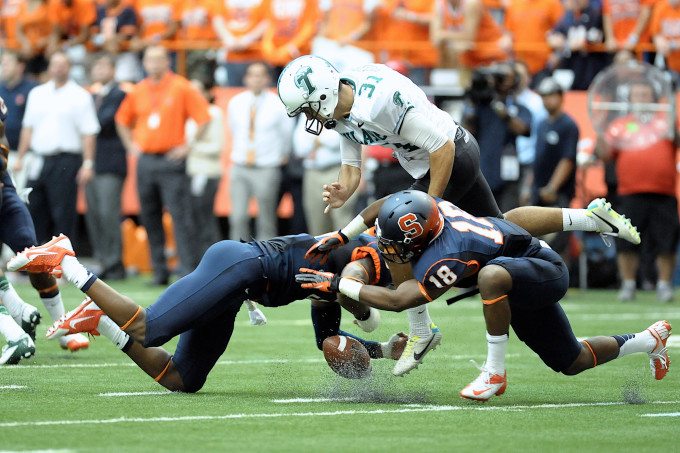
My walls of my bedroom where plastered with my favorite sports images as a kid way before I knew I wanted to be a photographer. It was my number one goal to have an image reach one of three places. A cover, a double truck or a full page image. I remember calling my parents while sitting in my office at the newspaper I was working for then. I still can hear their excitement. I tried to act like it was no big deal but like I said the grin on my face was there for months. My high school track coach had me sign a copy for him that he hung up in school. Even my dentist had me sign a copy for his office.I talked with Tyler and he signed a copy for me that I have framed and his parents bought copies of the photo for their home as it was a big deal that their son was in SI. It was a great feeling and a big honor. It drives me to try to repeat that feeling as I still have two other SI milestones to check off.
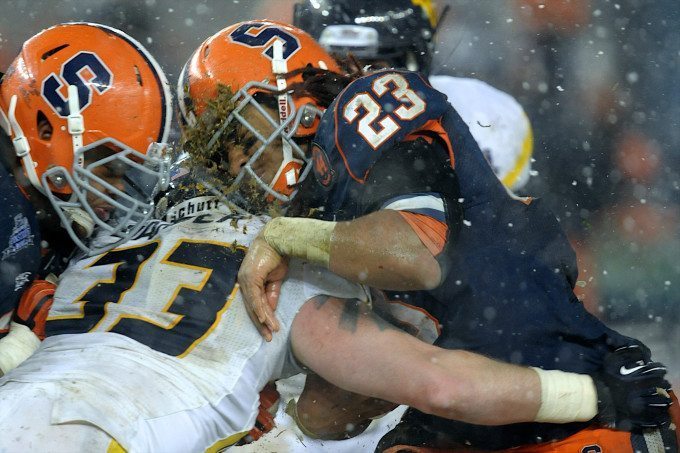
Phoblographer: What advice would you give to photographers today?
Mike: The thing I tell others is to always learn. You never stop learning. The day I feel I know it all is the day I stop taking photos. While I grew up in Kodak country with R.I.T. and Syracuse with in reach as I mentioned before I ended up going to a state school. So when I started my career I found that I since I was a one man show at the Livingston County News that I had no-one to ask questions of and share idea’s with. So I quickly started building a network of photography friends.
Guys like Mike Janes, Jerome Davis and Rich Barnes became good friends and also teachers. Janes like I said earlier was the baseball guy and Barnes taught me about shooting lacrosse. Davis and I would share ideas on everything. Another thing I did was listen to the established pro’s. One that I loved listening to and watching work was the late Rick Stewart. “Big Rick” as we all called him was one of the all-time great sports photographers. He fought for photographers. If there was an issue we would tell “Big Rick” and he’d take care of it. His portfolio and knowledge was amazing. I’m sad that I didn’t get enough time to talk with him before he past but I’ve tried to make the most of the time I did get to share with him.
